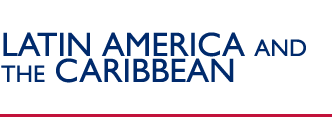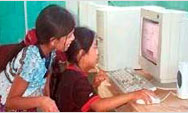Overview
Jamaica, located 600 miles south of Miami,  struggles with a persistent fiscal deficit and heavy indebtedness. Though classified as a lower middle income country, Jamaica has a skewed distribution of income and a relatively high percentage of disadvantaged residents due to economic policies favoring state control and re-distribution of income rather than wealth creation. In 2006 an average of 14.3% of the Island’s population fell below the poverty line with an incidence of 19.8% in the rural areas. In the same year, Jamaica’s GDP growth was 2.7% in comparison to Trinidad & Tobago and the Dominican Republic with 12% and 8.5% respectively. In 2007, the Food and Agriculture Organization designated Jamaica as one of the world’s 37 most food insecure countries. Political polarization, high rates of unemployment among males, endemic corruption and links with transnational crime have contributed to the highest homicide rate per capita in the world in 2005. Economic and social challenges are compounded by frequent natural disasters that impact key sectors such as tourism and agriculture. This conduces repeated rebuilding of key infrastructure including roads, schools and hospitals. struggles with a persistent fiscal deficit and heavy indebtedness. Though classified as a lower middle income country, Jamaica has a skewed distribution of income and a relatively high percentage of disadvantaged residents due to economic policies favoring state control and re-distribution of income rather than wealth creation. In 2006 an average of 14.3% of the Island’s population fell below the poverty line with an incidence of 19.8% in the rural areas. In the same year, Jamaica’s GDP growth was 2.7% in comparison to Trinidad & Tobago and the Dominican Republic with 12% and 8.5% respectively. In 2007, the Food and Agriculture Organization designated Jamaica as one of the world’s 37 most food insecure countries. Political polarization, high rates of unemployment among males, endemic corruption and links with transnational crime have contributed to the highest homicide rate per capita in the world in 2005. Economic and social challenges are compounded by frequent natural disasters that impact key sectors such as tourism and agriculture. This conduces repeated rebuilding of key infrastructure including roads, schools and hospitals.
Jamaica is the USG’s third largest trading partner in the Caribbean. Over the last four years, the U.S. has also accounted for the largest share of foreign direct investment. Jamaica attracts over one million travelers from the U.S. each year. Hence, the country’s political, economic and social conditions directly affect U.S. national interests.
Programs
Economic Growth
An overly-regulated business environment and an unskilled workforce impede private sector-led growth. USAID’s economic growth activities are geared toward promoting free market economic policies, streamlining government regulations and improving the basic literacy and job-relevant skills of the workforce. Due to the linkages between male illiteracy & unemployment and crime & violence, the workforce development and employment generation programs target at-risk male youth in urban areas.
Rural Development
There is also a strong link between Jamaica’s economy and its natural resource base. The country’s major industries, such as tourism, bauxite mining and agriculture can have adverse effects on the environment. USAID is working in biodiversity-sensitive rural areas to support alternatives to slash and The program supports agribusiness, eco-tourism and cottage industries that provide alternative livelihoods while preserving Jamaica’s unique biodiversity.
Health
USAID supports the National HIV/AIDS Program by providing financial assistance to the Ministry of Health for behavior change interventions, NGO strengthening, and improved data for better program targeting in Jamaica. At least 40% of Jamaican women are pregnant before age 20 and the increasing HIV prevalence rate is prominent among the 10-19 age group. The Jamaica Solution to Youth Lifestyle and Empowerment (JA-STYLE) project promotes healthy lifestyles and avoidance of high risk behaviors related to reproductive health, HIV/AIDS, substance abuse and violence.
Democracy
The USAID program supports the strengthening of civil society organizations to play more effective roles in helping transform poor, underserved communities beset with violent crime. USAID’s community policing initiative in three targeted urban communities is improving community-police relations and developing a community policing curriculum for the national police academy. USAID is also exploring opportunities to support the Government of Jamaica in combating corruption and engaging youth constructively in the political process.
Education
USAID assistance is helping to improve the literacy and numeracy skills of primary school children; providing educational and life skills programs for out-of-school youth; making educational financing more sustainable through public/private partnerships and encouraging parent and community participation to improve the quality and relevance of education. USAID also supports the Caribbean Center for Excellence in Teacher Training (C-CETT) Program, which is managed in Jamaica and enhances educational quality in eight Caribbean countries. New workforce development programs are scheduled to come on stream in 2008. |


